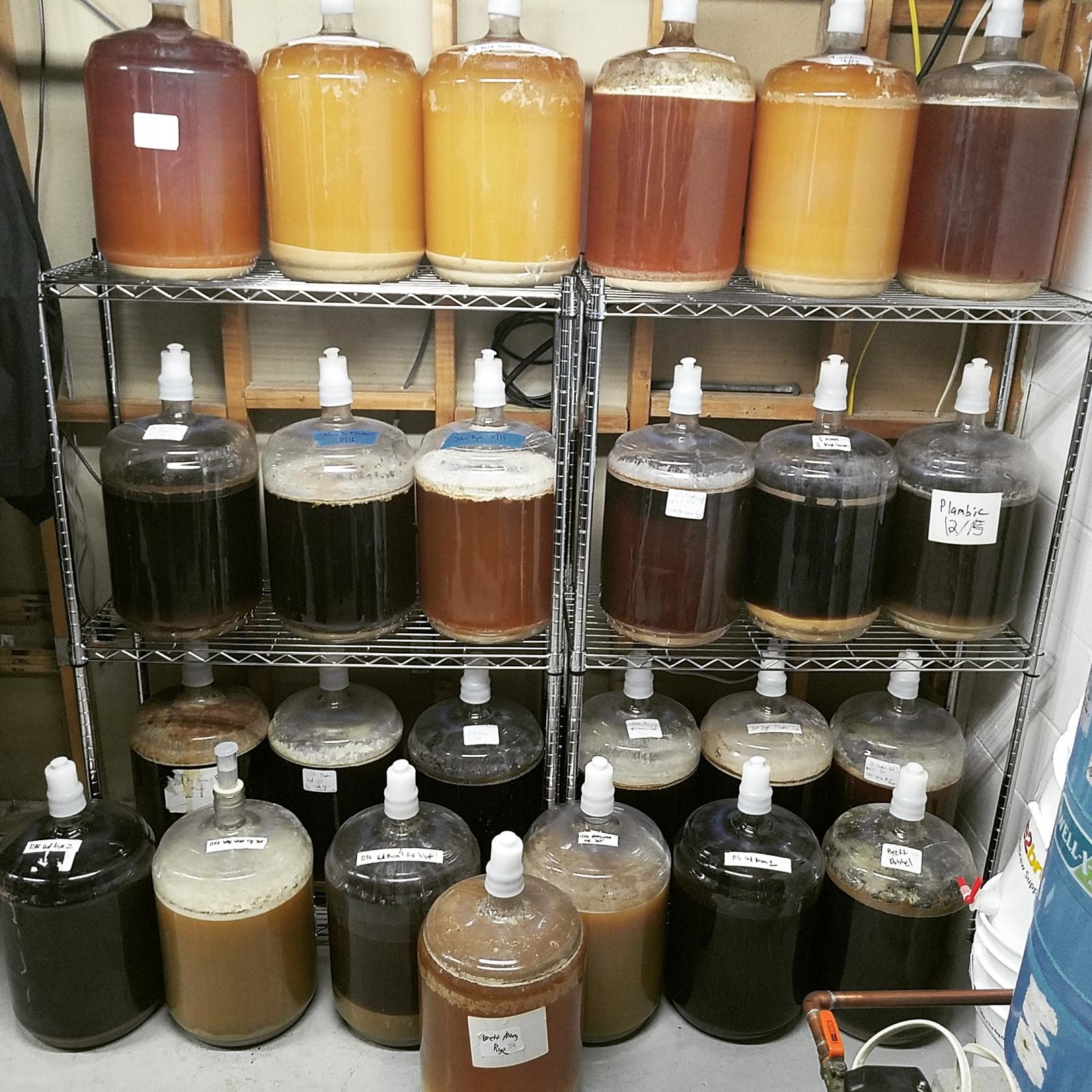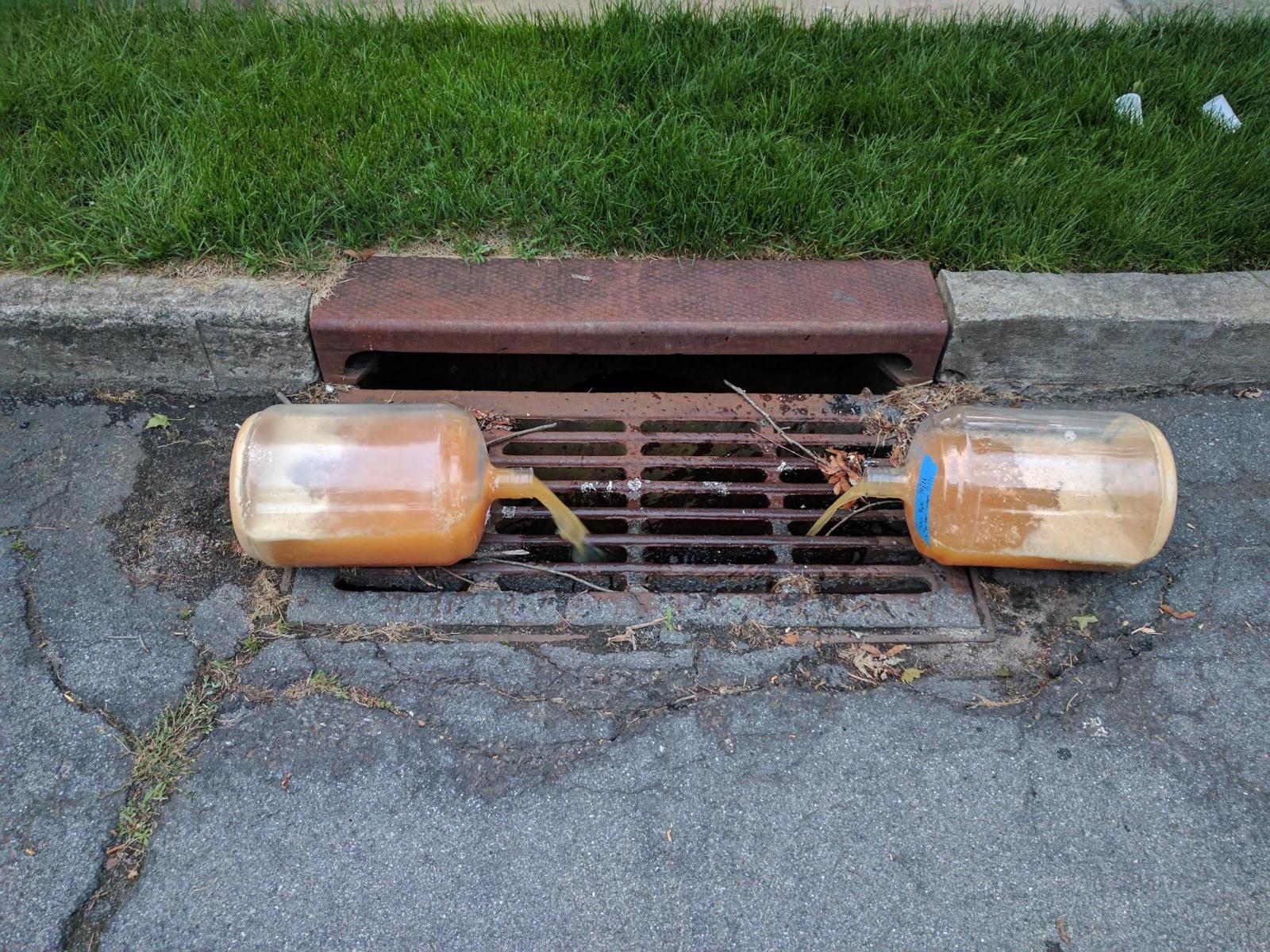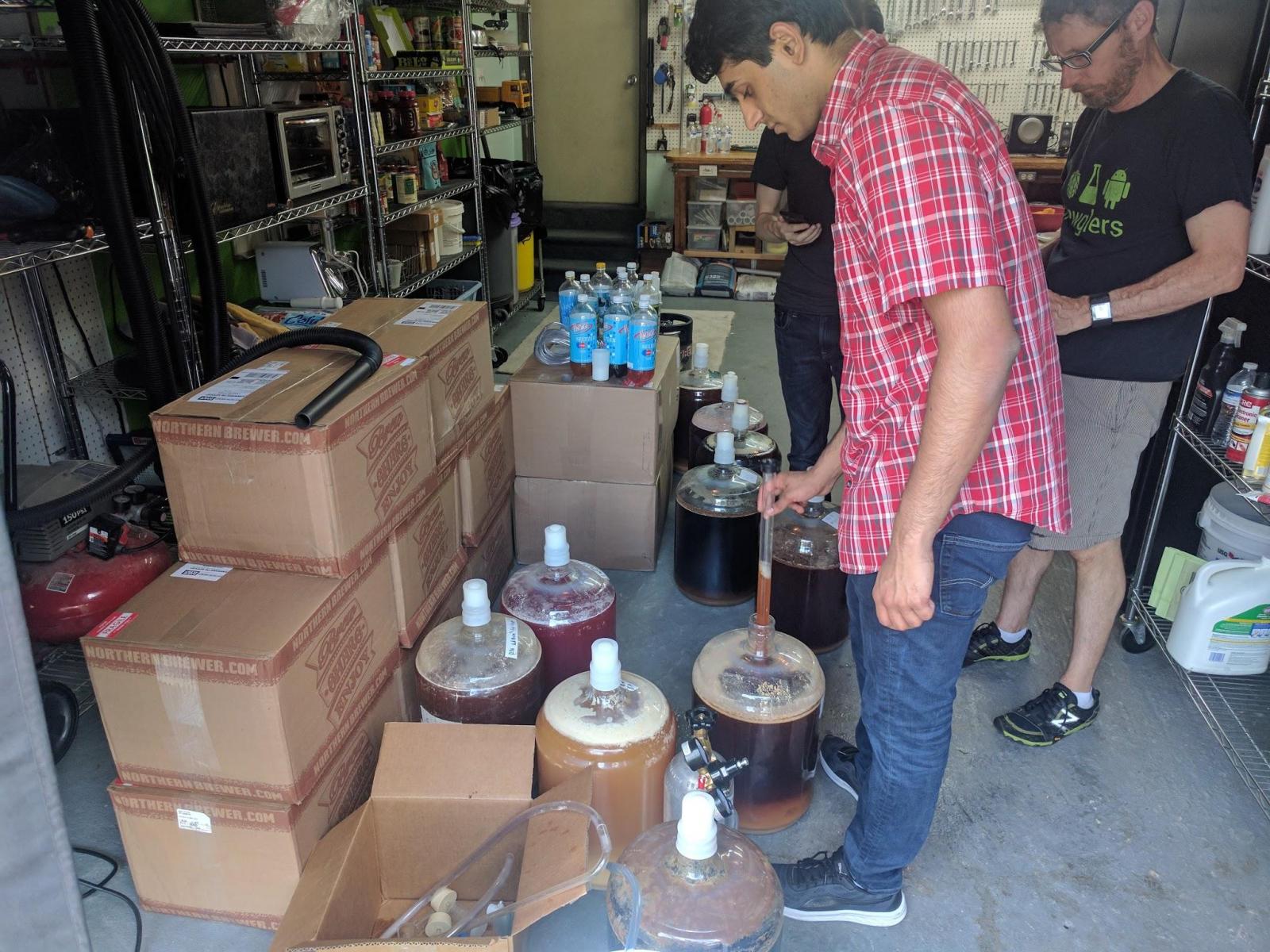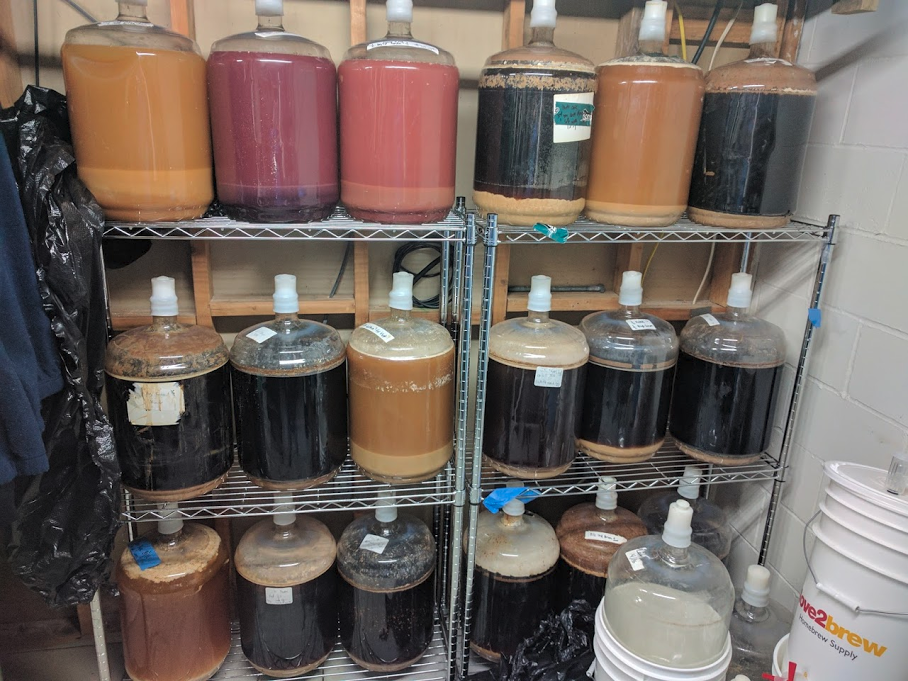And a big update on the project, because why not?
I’ve got 110 gallons of sour/brett beer split across 22 carboys. I invited 6 friends over 2 consecutive days to sample, blend and take home their own custom blend. With so much variety to choose from, everyone walked away pretty happy with their blends.
I took 10 gallons for myself, I gave away 25 gallons. We dumped 15 gallons. 2 batches were dumped because of pukeyness (both of which had substantial rye malt in their grist, not sure if that was a spurious correlation) and one because of acetone/acetic. Some of what remains is at risk of being dumped for being too acetic as well.
The most widely liked batch was a 15 month old blackberry sour I dubbed Pretty in Purple. It started as a 50/50 wheat/pils beer, 1.055 OG, where I pitched Nottingham and some 2nd generation Almanac dregs, which I grew up in a 1 gallon dregs batch. TBH, I am a little surprised that a dregs batch did better than all of the Yeast Bay, White Labs, Wyeast, and Bootleg Bio pitches. After 5 months the beer was super buttery, but it certainly turned a corner. The base beer had a nice funk and moderate acidity, somewhat acetic but still very pleasant for those who enjoy a classic Flemish Red. The base melded very well with a rush of mid palate fresh berry juice. It was on the 1.2 pounds/gallon of Vintner’s Harvest blackberry puree for about 6 weeks. I think the relatively small amount of time helped with preserving the fruit flavors.
I entered the blackberry beer in a sour homebrew contest at work (11 entrants, 12 including a joke entry of bud dosed/rebottled with lactic acid, thankfully that faired poorly). It won people’s choice by a large margin, and got 3rd in judges’ choice. It got dinged for being overly acetic. The judges’ #1 was a Milk the Funk Gose brewed a year ago by another MFTer who just joined our homebrew club. Welcome!
In general, I feel like fruit is over powered in sour beers. The next best beer in my cellar was also a 15 month old golden sour aged on 1.2 pounds/gallon of tart cherries, again from Vintner’s Harvest.
I racked using love2brew’s CO2 powered racking cane into a purged keg, which avoided THP after 1 week in the keg. THP was a huge problem for me before when using an auto-siphon into a keg. Yay! I am glad I slayed that beast. Some of my previous batches are still crackery even 6 months after packaging, which were racked into a keg using an auto-siphon. THP hit one of my friends who had the wrong fittings on his keg to do the CO2 powered transfer in our blending session. Quick note, when making a blend using the CO2 racking cane, measure the keg weight empty and full of sanitizer first, and then use the scale to determine blending proportions, rather than just eye balling from the carboy.
I bottled some using a cherry juice to prime, which is easier than making a sugar mixture, assuming that the calorie count gave an accurate measure of the amount of sugar in the juice. I am not sure such a small amount of cherry juice is going to influence the flavor of the bottled beers, but even saving the 10 minutes of making the sugar solution is worth it.
I bought a 24x12 capable 375 mL Belgian bottles from Northern Brewer. With 15% off and free shipping, they were slightly cheaper than $1/bottle. I felt more than slightly guilty due to inbev ownership, but there was nothing close in price for getting heavy duty bottles.
I put 2nd use fruit puree into relatively clean/widely liked but not loved beers. Hopefully I can get a little bit more fruit flavor out of them. Certainly the second use blackberry beer has a very nice purple hue already.
My sour cellar is way too acetic, I’ll change my process in the following ways to tone down sourness/acetic levels.
- I am using morebeer’s premium breathable carboy caps so that I can leave the beers unattended for a long time without risking airlocks drying out. I’ll put them in push down mode after primary fermentation complete, which emulates a hard bung. Hopefully this will prevent oxygen ingress better than the mode that enables CO2 to escape.
- I’ll top up carboys up to the neck with other beers after primary is complete.
- I won’t sample unless trying to make a decision about a beer. I won’t sample until at least 6 months.
- I won’t neccesarily wait 12+ months to package; some 6 month old mixed fermentation beers were preferred over the older ones.
- I’ll keep more bacteria free, sach/brett beers in the cellar for blending purposes. Previously about 20% of the cellar was Brett beers, I’ll probably up that to 40%.
Acetic Flander’s Reds/Oud Bruins were generally more widely liked than acetic golden sour beers. The residual sweetness from the crystal malts balances out the aggressive acidity better than golden beers, which have little malt presense. Maybe a Flanders would make a better choice for a first homebrew mixed fermentation sour because of this.
I would have loved to have some clean saisony/belgiany beers to blend to tone down sourness. It would have been nice to be able to convince friends to trade clean beer for sour beer in blending.
If you are in the NJ area (the cellar is in Jackson, NJ) and want to participate in my next blending session, I’d happily accept 5 gallons of cleanly fermented beer, or freshly made wort in exchange for 5 gallons of blended sour beer. I might do another blending session in late August.
I encouraged all the participants to read Dr Lambic’s excellent sour blending article. Though it’s great, it is too long to expect people to read. Only one of six blenders read it, even though ⅚ were really into sour beer. Perhaps a cliff notes version is worthwhile.









